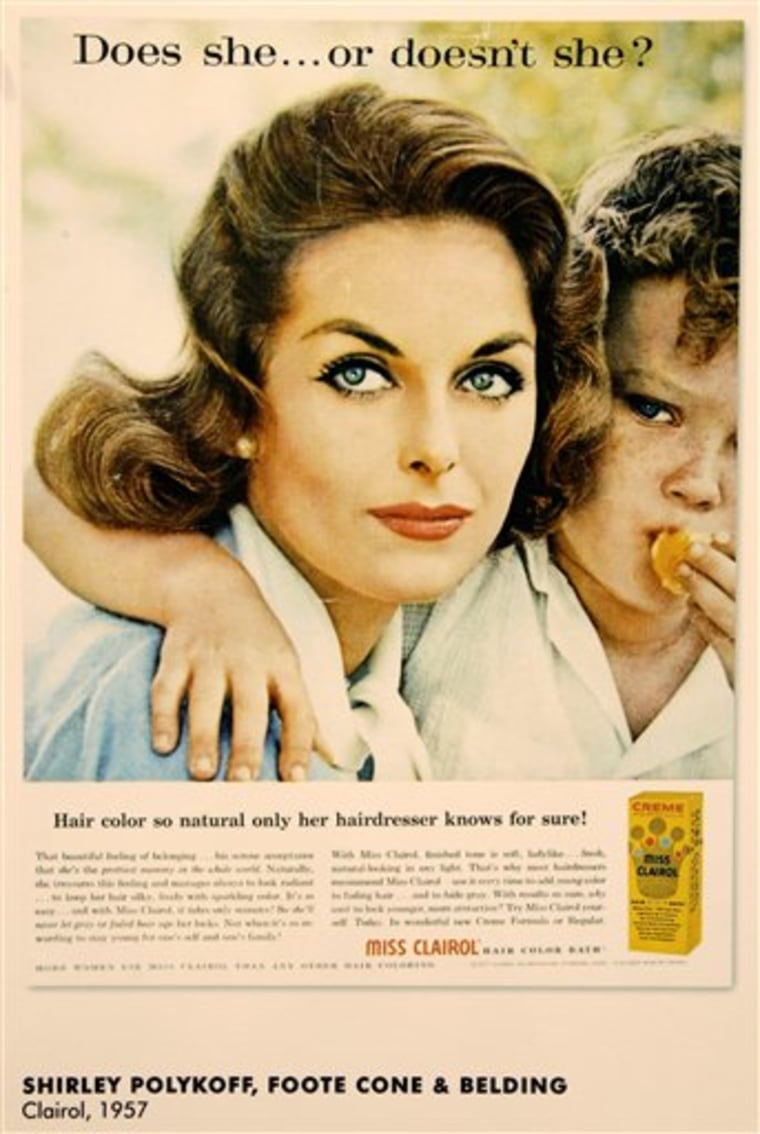"Does she or doesn't she?" "I can't believe I ate the whole thing." "Where's the beef?"
Before these slogans became lodged in our brains, they were dreamed up by advertising copywriters and executives with a knack for tapping into the spirit of the times.
A new exhibit opened this week at the New York Public Library celebrates the creators of some of the most successful ad campaigns of the last 80 years — from a fresh-faced girl selling Palmolive soap in the 1920s to today's silhouetted iPod dancers.
The exhibit "The Real Men and Women of Madison Avenue" was conceived partly as a response to "Mad Men," the critically acclaimed TV show about the relationships and intrigue at an advertising agency in the 1960s.
"We just sort of wanted to say, 'Well, these are the actual people, and this is who they are,'" said co-curator Ann Cooper.
The show at the NYPL's Science, Industry and Business Library — on Madison Avenue, appropriately — features print ads and TV commercials plus recorded interviews with the people behind them.
"Rather than just making a big deal out of the work, it sort of puts it in a time frame," said Ed McCabe, whose work with Scali McCabe Sloves in the '60s and 1970s is part of the exhibit.
McCabe said it was his idea to build the Perdue campaign around the company's president, Frank Perdue.
"It became inevitable that he be the guy and that it be about all the lengths he goes to to make a better chicken," said McCabe, 69, who works as a consultant. "The idea of doing that wasn't so original. It was the idea of doing it for chicken with a guy that looked something like a chicken and sounded something like a chicken."
"Mad Men," which starts its second season July 27 on AMC, relegates women to typing and filing.
But "The Real Men and Women of Madison Avenue" highlights influential women in advertising such as Phyllis Robinson, who joined Doyle Dane Bernbach when it opened in 1949 and came up with "It lets me be me" to sell hair coloring.
"It seemed very simple and straightforward and not pretentious," Robinson, 86, said in a telephone interview from her Manhattan home. Robinson said no one held her back because she was a woman.
"Not in the least," she said. "I slid right in and did my stuff."
Mary Wells Lawrence started as a copywriter in the 1950s and founded her own agency, Wells Rich Greene, in 1966.
"People are always saying, 'Wasn't it a male business?' It was not a male business," Lawrence said. "You would think that we were all cowering under the desk."
Lawrence said she is proud of how her agency handled the "I Love New York" campaign of the mid-1970s, which drew on people's buried affection for New York City and state.
"It was a time that was so bad for New York," said Lawrence, speaking by phone from the islands of British Columbia on the boat where she spends several months of the year. "But even though people were very angry because there was garbage on the streets and the teachers were quitting, in their hearts they loved New York."
The library exhibit is co-sponsored by The One Club, a trade association that bestows awards for excellence in advertising. The men and women whose work is on display are members of the club's Creative Hall of Fame.
"I think it's important to recognize that people made these ads," said Mary Warlick, CEO of The One Club and co-curator of the exhibit. "They didn't just appear."
